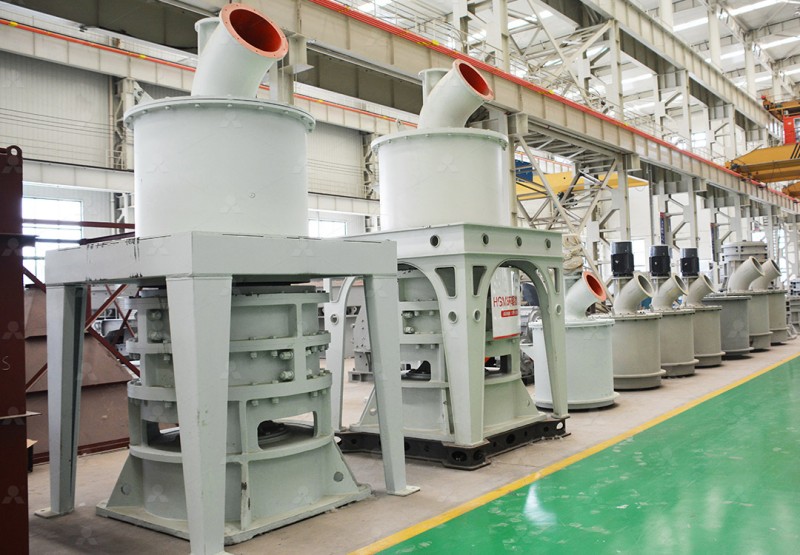Complete Equipment for Producing Cement from Slag Grinding: A Comprehensive Guide
We provide a wide range of mills — including Raymond mill, trapezoidal mill, vertical mill, ultrafine mill, and ball mill, obtained ISO9001 international quality certification, EU CE certification, and Customs Union CU-TR certification. Suitable for processing minerals such as limestone, phosphate, quicklime, kaolin, talc, barite, bentonite, calcium carbonate, dolomite, coal, gypsum, clay, carbon black, slag, cement raw materials, cement clinker, and more.
The discharge range of these mills can be adjusted to meet specific processing needs, typically from 80-400 mesh, 600-3250 mesh, and can achieve the finest particle size of up to 6000 mesh(D50).
If you are looking for a reliable grinding solution to turn stone or minerals into fine powder, please feel free to contact our online customer service.
Complete Equipment for Producing Cement from Slag Grinding: A Comprehensive Guide
Slag, a byproduct of steel production, has become a valuble resource in the cement industry. When ground into fine powder, it exhibits excellent hydraulic properties and can significantly enhance the strength and durability of cement. However, transforming this industrial waste into a high-quality cementitious material requires a sophisticated and efficient grinding system. This guide will walk you through the essential components and considerations for a complete slag grinding production line, highlighting key equipment that can maximize your output and profitability.
The Core of the Operation: Selecting the Right Grinding Mill
The choice of grinding mill is the most critical decision in designing your slag cement production line. The mill must be capable of handling the abrasive nature of slag, achieving the required fineness (typically between 400-550 m²/kg Blaine), and doing so energy-efficiently. While ball mills have been traditional workhorses, modern vertical roller mills (VRMs) and specialized ultrafine grinding mills offer superior performance.
For operations focusing on ultra-fine slag powder for high-performance concrete, the MW Ultrafine Grinding Mill is an exceptional choice. This machine is engineered for customers who need to make ultra-fine powder from various materials. With an input size of 0-20 mm and a capacity range of 0.5-25 tph, it’s perfectly suited for precise slag processing. Its cage-type powder selector, which adopts German technologies, allows for adjustable fineness between 325-2500 meshes, ensuring you can meet exact product specifications. A significant advantage is its design without rolling bearings or screws in the grinding chamber, eliminating common failure points and concerns about loose components causing machine damage.

Beyond the Mill: Essential Auxiliary Equipment
A grinding mill doesn’t operate in isolation. A complete system includes several key components that ensure smooth, continuous, and efficient operation.
- Jaw Crusher: Primary crushing of larger slag pieces to a size suitable for the grinding mill.
- Bucket Elevator & Vibrating Feeder: For transporting and evenly feeding material into the mill.
- Dust Collection System: Slag grinding is a dusty process. An efficient pulse jet baghouse, like the one integrated into the MW Mill, is non-negotiable for environmental compliance and operator safety. It ensures no dust pollution during operation.
- Silencer/Muffler: Grinding operations are loud. Noise reduction equipment is essential for meeting occupational health standards.
- PLC Control System: Automated control allows for precise adjustment of grinding parameters, stable operation, and remote monitoring, reducing labor costs and human error.
Why Choose a Vertical Mill for Slag?
For larger-scale production, a vertical roller mill like our LUM Ultrafine Vertical Grinding Mill or the LM Vertical Slag Mill presents compelling advantages. These mills integrate drying, grinding, classification, and conveying into a single, compact unit. They are incredibly energy-efficient, consuming 30%-40% less power than traditional ball mill systems. Their unique grinding curve design promotes easier material layer formation and results in a higher rate of finished product in a single pass, greatly enhancing the whiteness and cleanliness of the final slag powder—a key marketability factor.

Maximizing Efficiency and Minimizing Downtime
The abrasive nature of slag means wear part consumption is a major operational cost. Look for mills with wear-resistant alloys for rollers and tables, offering a service life 1.7-2.5 times longer than traditional materials. Furthermore, designs that facilitate easy maintenance are crucial. Features like hydraulic systems that allow grinding rollers to be swung out of the mill for inspection or replacement drastically reduce downtime and maintenance costs.
Remember, the goal is a seamless, continuous operation that transforms waste slag into a consistent, high-value product. Investing in robust, efficient, and automated equipment from the outset pays dividends in the long run through lower operating costs, higher product quality, and minimal environmental impact.

By carefully selecting your core grinding equipment, such as the high-precision MW Ultrafine Grinding Mill for specialized applications or a robust LM Vertical Slag Mill for high-volume production, and pairing it with the correct auxiliary systems, you can build a slag grinding plant that is not only profitable but also a model of modern, sustainable industrial processing.
